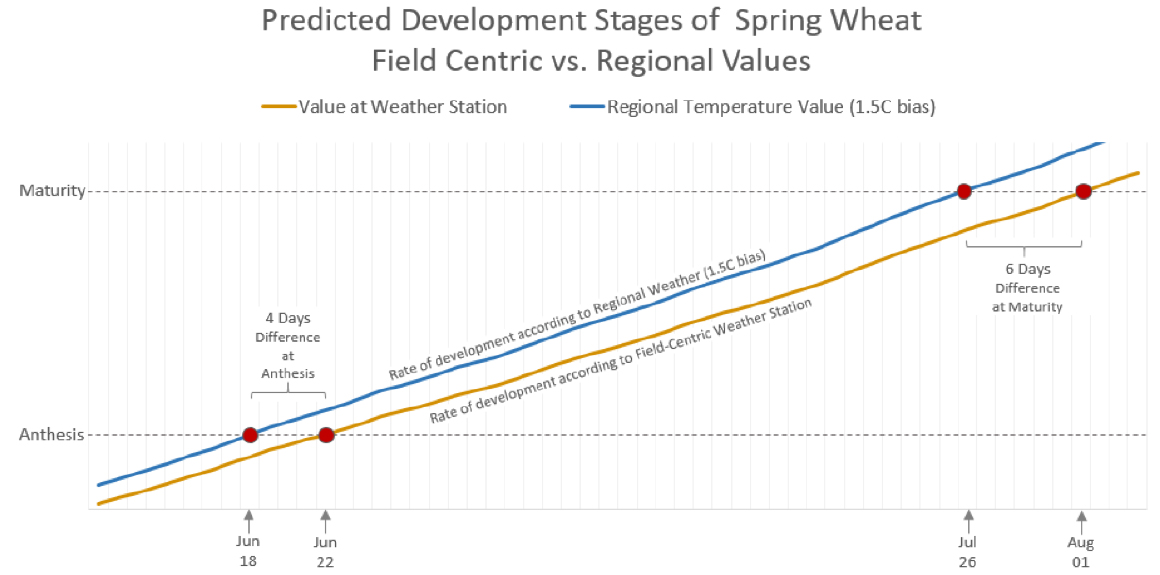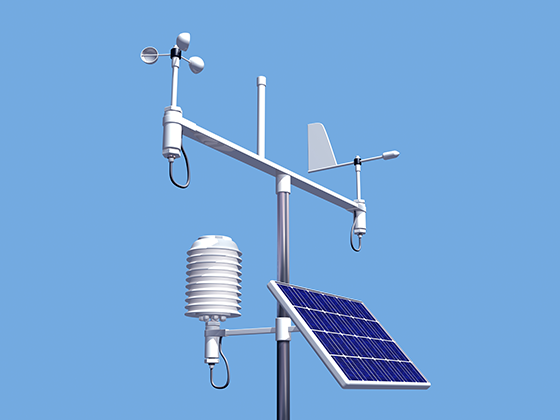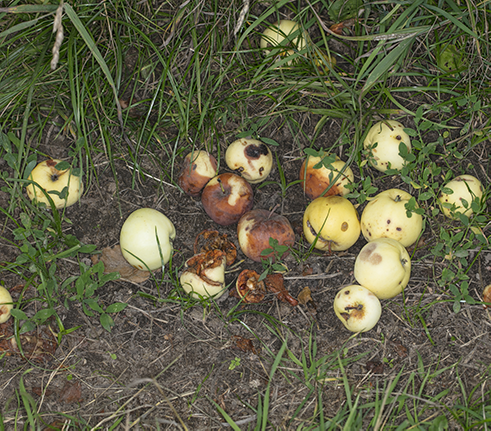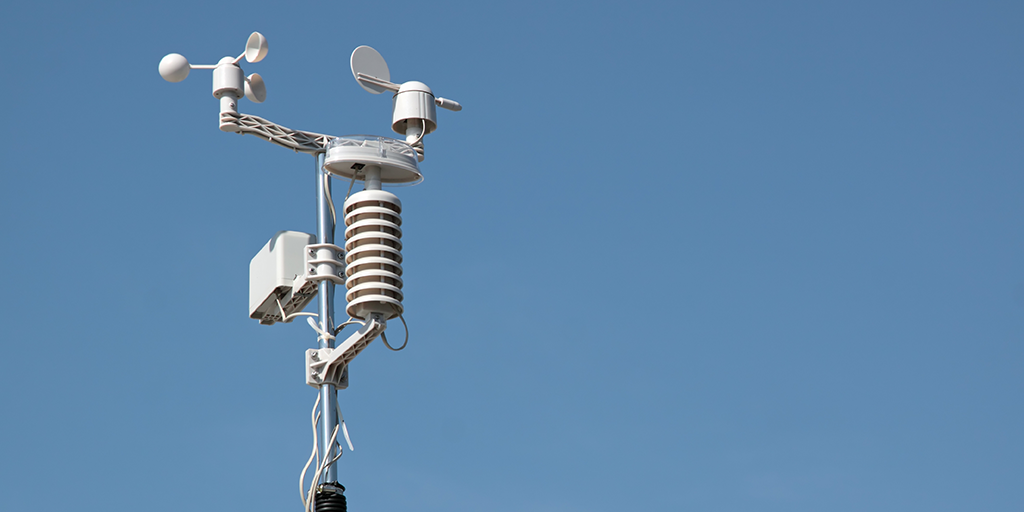The development of agriculture has always been closely tied to the interpretation and prediction of weather. The first standard rain gauge was developed in 1441 and since then, humans have been attempting to better predict the weather using increasingly advanced tools to protect their crops.
No matter how many technological innovations happen in the agriculture industry, growing food will always be dependent on the weather where it is grown. Weather is the most important variable in crop health and being able to closely monitor it is extremely valuable when determining planting times, treatment plans, irrigation schedules, and more.
Generally, information on weather events happening in your area come from centralized sources, with meteorologists interpreting data for large geographical areas. If you are getting your weather information from a weather or news service, it is likely the data is coming from one weather station at the closest airport. Actual weather on the ground can vary a lot, even over a few kilometres. And of course, even a few degrees of difference in temperature or millimeters of rainfall can have huge effects on your farm. This is where the on-farm weather station comes in handy.
For example, temperature measurements are often used to determine Growing Degree Days (GDD). This measurement can be used to predict growth stages based on when you planted and the weather since planting. Cooler temperatures mean fewer GDD. Using more accurate temperature information from your fields as opposed to temperatures taken miles away can make big differences in calculating growth stages using GDD. The graph below shows a difference of 6 days in the recommended harvest date given weather information from the farm, vs. information from a regional weather service.

Having more accurate weather data for your land allows you to make much more effective agronomic decisions.
Many farmers have employed weather stations for years using analog instruments and data collection such as rain gauges, barometers and thermometers. Today’s weather sensors and stations are largely digital and can feed information to your computer or mobile device instantly. While by no means an exhaustive list, we’ve outlined a few major components and features you can look for when choosing a personal weather station.
Components of Weather Stations:
Anemometer - Measures wind direction and speed.
Thermometer - Measures atmospheric temperature.
Hygrometer - Measures relative humidity using a percentage measure of water vapour in the air.
Barometer - Measures atmospheric pressure to predict precipitation
Rain Gauge - Measures liquid precipitation using an open container. They usually empty automatically and measure the amount of rainfall over a given time interval.
Pyranometer - Measures solar radiation levels from the sun in watts per square meter (used to calculate ‘evapotranspiration’, the rate at which water evaporates from the soil).
UV Sensor - Measures UV rays from the sun. These sensors are used for precision growing in particular crops like cannabis, where overexposure to UV-rays can stunt leaf growth or affect potency.
Leaf Wetness Sensor - Measures surface moisture of the plants on a scale of 0-15 (dry to saturated). Data from these sensors are used in fungal disease control.
Soil Moisture Sensor - Measures water levels in the soil
Soil Temperature Sensor - Monitors the soil temperature to detect freezing, or high temperatures that can put crops at risk. Also used to calculate rate of evapotranspiration.

This weather station is equipped with a cup anemometer, temperature and humidity sensor, wind speed and direction monitor, and solar pannels for power.
Putting The Data To Work
The information gathered from these various sensors can be used in many areas of production, including planting, harvesting, spraying, irrigation, and protection. We will go into some detail on each below.
Planting
Soil temperature and moisture are key factors that impact seed germination, and planting too early can have serious consequences in the event of a late spring frost. Atmospheric and soil temperature sensors are useful in determining the right time to plant to give your crops the best chance. A digital weather station can send current temperature conditions to you in real time so you can plant at the best possible time.
Soil moisture sensors can let you know where the ground is too wet or dry to plant it. Soil moisture levels can vary a lot, even within a single field, so being able to test in multiple spots can give you a much more accurate picture of where it is too wet or too dry to plant.
Spraying
Wind speed and direction are two obvious factors that affect the spraying of pesticides or chemicals. “Spray drift” or “Herbicide drift” can occur in two ways, particle drift and vapor drift. Generally, wind speeds of 3 - 7 miles per hour are the preferable conditions for spraying, but always follow the spray instructions on the chemical label before applying any chemical to your fields.
The role of humidity in disease control is an often overlooked aspect of precision farming. Fungal diseases in plants thrive in moist, humid environments and can have a major impact on yield. Humidity information from weather sensors can be used in combination with temperature and wind information to make more informed decisions on where and when to spray.
Irrigation
On-farm weather stations can contribute to water savings, for the environment and for your wallet. High quality weather stations featuring rain-gauges, soil moisture sensors, and sensors that can measure evapotranspiration can all be used to assess your crops’ irrigation and watering needs, and to help you avoid excess water use.
Crop Protection
Growers of crops sensitive to wind are well aware of the damaging effects that high winds and poor weather can have on yield. One intense windstorm or hail storm can cause massive or total losses of some crops. Monitoring wind speed and atmospheric pressure changes in your area means that it is easier to take precautions like covering or netting crops in the event of a coming storm.
Harvesting
Timing your harvest is a critical aspect of precision agriculture. Poor timing can lead to huge losses at harvest time, and calculating your GDDs based on accurate, hyperlocal weather information will allow you to most accurately predict the maturity of your plants, and make the best decisions for when to harvest. The advanced warning a personal weather station can provide in the event of unfavourable conditions can be used to plan your harvest, whether it needs to be pushed up to avoid losses in a storm, or whether your crops need more time on the vine.

A poorly timed harvest can result in huge losses for growers.
These tools are extremely effective as long as you can collect and interpret your data into something useful. Look for farm weather stations with a high quality software system that can analyze patterns in your data and send you information in real time. Research where the best placement on your farm is for your various weather sensors and whether your farm would benefit from multiple sensors. It is also important to think about where you can integrate with farm management software like Croptracker to get a true big picture view of your operation, and make the best decisions for your crops.
Interested in learning more about Croptracker? Learn more about our Farm Management Software, or book a demonstration to schedule a meeting with our product experts.
And as always, if you're ever stuck, never hesitate to e-mail us at support@croptracker.com or Live Chat with us by clicking the green speech bubble ![]() in your bottom right-hand corner. We're always happy to help, so Croptracker can make your farm more efficient, safer, and more profitable!
in your bottom right-hand corner. We're always happy to help, so Croptracker can make your farm more efficient, safer, and more profitable!


